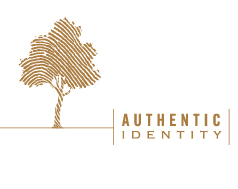By Belden Menkus
There's a model for strategy and implementation that I learned at McKinsey; it's the same one you are taught at business school, or read in most textbooks about strategy and execution. That model has been losing its effectiveness and is now dangerous. We need something new.
The old model goes something like this:
Analysis + Plans = Engagement
First, you do the analysis; it tells you the answer (not exactly for your business, but for a hypothetical business sort of like yours). Then you develop a plan. Finally, you tell everybody what they have to do. In more contemporary language, you engage them. But it amounts to pretty much the same thing.
The Illusion of Certainty
Here's why this approach is dangerous. By it's very nature data must be about the past. As we've seen over the last few years, the past is now a bad guide to the future. And, it's usually possible to use the same data to reach completely opposite conclusions - depending on the result you want. But the very fact that you've got great graphs and lots of very precise numbers gives a false sense of certainty.
Not that long ago, it wasn't uncommon for people to have five or perhaps even 10 year plans. Even if you didn't, you felt you should have. Now things are much more uncertain and rapidly changing. So you can spend a lot of time planning, only to find it's worse than useless. Once you've spent several months developing a multi-year plan, it can be very difficult to change it, even when the situation has changed a lot.
Finally, in today's world, telling people what to do (however much it's dressed up) doesn't get the best out of them. What's needed is some way to help people see for themselves what needs to be done and to have the tools to be able to make progress in doing it.
A New Approach
Instead of this traditional model, my clients are increasingly using an approach that's more suited to the circumstances we're in now.
Situation + Identity = Action
With it, they've been able to develop strategies more quickly, responding to disruptive developments in a way that builds on their heritage and historical strengths, while reinventing them for rapidly changing circumstances. At times the result has been a major shift in direction, in other cases it's been confirmation of an existing strategy. Either way, it's allowed people throughout the organization to understand and support it, so they can bring it to life.
Situation: This new model starts by looking at your situation, your "where we are". That might seem to be the same as “analysis” from the old model, but it is not. Analysis drives for detail, for certainty. What is needed is the big picture and an awareness of uncertainty. Carefully selected analyses can illuminate aspects of your situation. But, you need to incorporate additional elements - where data may be lacking, where a strong hunch needs to be reflected, where you aren't entirely sure yet what it means.
However, there's a more fundamental difference. Your situation is a matter of choice. I'm not saying that you can choose the objective facts on the ground: they are what they are. But let me tell you a story. There was a shoe company that wanted to know if it should enter a new market, a somewhat underdeveloped market. They sent two people out to investigate. One came back and said, "There's no market there, these people don't wear shoes." The other came back and said, "What a great market, nobody there has any shoes." Same data, completely different choice of situation.
Identity: Your Identity - your "who we are" - like your situation, includes an element of objective fact: how many people you have, what skills they have, etc. But it too is a matter of choice, as it includes things like "Who are we in our best moments? Who could we be? Given the situation we're in, who do we want to be?" When you think about your situation, do you want to be an innovator, a follower, or just somewhere in the middle of the pack?
Action: The new model says that when you are clear and aligned about your situation and your identity, then the action you take follows naturally. Imagine you're driving to a business meeting late at night on an unfamiliar, unlit, winding road. If nothing goes wrong, you will just get there on time. It starts to rain. Do you slow down to be safe and take the risk of being late, or keep going to get there on time and take the risk of an accident? If, at that moment, your Identity is "father of four" you slow down; if it's "reliable, 100% on time" you press on.
As for an individual, so for a business. Who you are is defined by the choices you make about your situation and your responses to it. Your actions are determined by these leadership choices. Creating clarity and alignment about them allows an organization to respond faster, more effectively, and with lower risk to rapidly changing, uncertain and potentially contentious circumstances.
____________________________________________________________________
Belden Menkus is founder and CEO of Menkus & Associates. He helps senior teams take action quickly and effectively by clarifying their situation and aligning around their identity. You can reach Belden at belden@menkus.net


